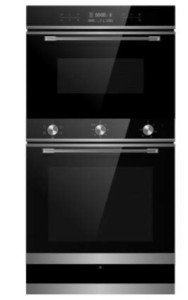The Rise of Built-In Ovens: A Seamless Approach to Modern Cooking
In contemporary cooking areas, where design aesthetics mix seamlessly with performance, one home appliance stands apart as a true game changer: the built-in oven. As homeowners and chefs alike continue to seek innovative options that improve their cooking experience, built-in ovens have actually become significantly popular. This post checks out the advantages, considerations, and trends surrounding built-in ovens, highlighting why they are a necessary function in modern cooking areas.
What is a Built-In Oven?
A built-in oven is a kitchen appliance designed to be integrated into the cabinets of a kitchen rather than standing alone. Unlike standard freestanding ovens, which can be moved and placed anywhere, built-in ovens can be found in various styles and sizes to fit specifically within designated spaces. Offered in single or double configurations, these ovens offer a structured look that matches contemporary kitchen area styles.
Advantages of Built-In Ovens
1. Space-Saving Design
Among the most appealing advantages of built-in ovens is their space-saving style. By integrating the oven into cabinets, you can maximize valuable counter and floor area. This is particularly beneficial in smaller sized kitchen areas, where maximizing room is vital. Built-in ovens can be installed at eye level, making them more accessible and reducing the requirement to bend down.
2. Aesthetic Appeal

Built-in ovens add to a sleek and cohesive kitchen style. Offered in various surfaces-- such as stainless steel, black, white, and custom cabinets-- they can blend seamlessly into the total design. This aesthetic appeal enhances the kitchen's visual consistency and raises the area, developing a modern-day and advanced atmosphere.
3. Boosted Functionality
Lots of built-in ovens come geared up with innovative cooking innovations, such as convection cooking, steam ovens, and clever functions. These improvements permit for flexible cooking alternatives, making it easier to achieve professional-level outcomes in the house. Smart built-in ovens can even connect to Wi-Fi, allowing users to manage the oven from another location, receive notices, and access a variety of cooking programs and recipes.
4. Enhanced Ventilation
Due to the fact that built-in ovens can be integrated with cooking area hoods and ventilation systems, they can help preserve better air quality and reduce cooking smells. This is particularly considerable for those who like to prepare with fragrant spices and ingredients, as an efficient ventilation system can keep the cooking area comfy and inviting.
5. Modification Options
Built-in ovens provide a wide range of modification alternatives to fit private cooking styles and needs. From bulit-in ovens -grade appliances with several cooking modes to compact styles for smaller sized kitchen areas, property owners can choose the oven that fits their specific requirements. Numerous makers also provide adjustable front panels, allowing you to match the oven's look to your kitchen cabinetry for a genuinely combined appearance.
Factors to consider When Choosing a Built-In Oven
While built-in ovens have many advantages, there are essential factors to consider to remember before purchasing:
1. Cost
Built-in ovens usually feature a higher rate tag than their freestanding equivalents due to their style and installation requirements. It's essential to aspect in both the expense of the oven and any additional expenses associated with cabinets modifications or setup.
2. Setup Requirements
Installing a built-in oven frequently requires expert support, particularly if you require to customize existing cabinetry. Make sure that you consider any costs related to installation, including labor and possible kitchen cabinetry modifications.
3. Size and Dimensions
Before buying a built-in oven, determine the designated space precisely to ensure a correct fit. Built-in ovens can be found in different sizes and setups, so choosing one that aligns with your requirements and kitchen style is important.
4. Lifestyle and Usage
Consider your cooking habits and needs when picking a built-in oven. If you often host large gatherings, a double oven may be more beneficial. On the other hand, if you have a compact kitchen, a single-wall oven may suffice.
Patterns in Built-In Ovens
The kitchen area device market is continuously developing, and built-in ovens are not exempt from emerging trends. Some existing patterns include:
Smart Technology Integration: With the increase of smart home technology, built-in ovens now typically include connectivity alternatives. This allows users to monitor cooking progress and adjust settings through mobile apps.
Energy Efficiency: As sustainability ends up being a priority, numerous manufacturers are investing in energy-efficient built-in ovens that reduce energy usage while keeping performance.
Multi-functional Designs: Built-in ovens now provide functions such as air frying, sluggish cooking, and steaming, providing flexibility that fulfills a vast array of cooking methods.
Conclusion
Built-in ovens unquestionably represent an ideal mix of style, function, and benefit in today's kitchen areas. As more homeowners opt for this modern option, the focus shifts to creating a cooking space that is as visually pleasing as it is practical. Whether you are constructing a new home or redesigning your kitchen area, considering a built-in oven might raise your cooking experience and change your cooking area into an elegant and functional sanctuary. With a range of alternatives readily available and ongoing developments in technology, built-in ovens stay a standout option for both novice cooks and culinary enthusiasts alike.
